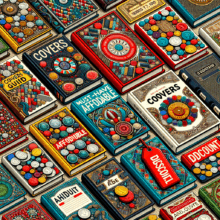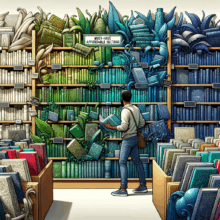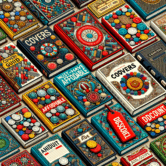Introduction
The allure of antique musical instruments transcends time and culture, revealing rich histories, artistic expressions, and endless stories. This article takes you on a journey through the past, exploring not only the instruments themselves but also the craftsmanship, historical contexts, and cultural significance behind them.
1. The Evolution of Musical Instruments
The Prehistoric Era
Musical instruments date back to prehistoric times, with early examples including bone flutes and percussion instruments made from stones and animal skins. These rudimentary tools were not just entertainment; they served spiritual, social, and communication purposes.
Cultural Context:
In ancient societies, music played a vital role in rituals, community gatherings, and celebrations. Instruments often embodied the natural elements, expressed through the materials used—bones, wood, and stones.
The Ancient Civilizations
As civilizations advanced, so did their musical instruments. Ancient Egypt, Greece, and Rome contributed significantly to the development of various instruments like the lyre, harp, and aulos.
Instrument Spotlight:
- Lyre: The lyre, particularly in ancient Greece, was not only a musical instrument but also a symbol of cultural identity and sophistication. Crafted from wood and strings, it is an example of how music reflected philosophy, literature, and art.
Medieval to Renaissance Period
The transition from the Medieval to Renaissance eras saw a surge in musical innovation.
Instruments Evolved:
- Organ and Harpsichord: During the Renaissance, larger instruments like the organ and harpsichord were developed, showcasing intricate craftsmanship and reflecting the aesthetic tastes of the time.
Baroque to Classical Era
The Baroque period saw the emergence of string instruments like the violin, viola, and cello. The craftsmanship reached new heights, with luthiers like Stradivari and Guarneri gaining worldwide acclaim.
The Birth of Modern Instruments
By the late 18th and early 19th centuries, wind instruments like the clarinet and trumpet underwent significant transformations.
Innovation Spotlight:
- The pianoforte was a revolutionary instrument, allowing for greater expression through dynamics and touch, paving the way for future musical compositions.
2. The Craftsmanship of Antique Instruments
Techniques and Materials
Each instrument’s quality is often a reflection of the materials used in its creation. Woods like spruce, maple, and walnut were commonly utilized, each imparting unique acoustic properties.
Craftsmanship Techniques:
Craftsmanship involves not just the selection of materials but also the intricate techniques developed over centuries. Hand-carving, bending, and varnishing techniques contribute to an instrument’s sound and longevity.
Master Luthiers
From Stradivari to Amati, master luthiers have left an indelible mark on the world of music.
Real-life Example:
- Antonio Stradivari, active in the late 17th and early 18th centuries, crafted violins that are still revered today for their tonal excellence.
Instrument Restoration
The delicate nature of antique instruments means that restoration often requires specialized knowledge. Experts must balance preserving the instrument’s original integrity while ensuring it remains playable.
Case Study:
- Restoration of a Stradivarius: A renowned case is the restoration of a Stradivarius violin, which may involve repairing cracks, replacing damaged components, and maintaining the original varnish.
3. Cultural Significance of Antique Instruments
Music as a Cultural Reflection
Music serves as a reflection of societal values, aspirations, and struggles. Each instrument carries its narrative, often linked to various social and historical events.
Instruments in Different Cultures
From the sitar in Indian classical music to the didgeridoo in Australian Aboriginal traditions, each instrument symbolizes specific cultural identities.
Example:
- The dombra from Eastern Europe is more than an instrument; it represents the cultural heritage of Kazakhstan, often played during folk festivities.
Instruments in Religious and Spiritual Contexts
Antique instruments often held spiritual significance. For example, the use of drums in shamanistic rituals highlights music’s connection to the spiritual world.
Research Insight:
Studies show that music therapy, using traditional instruments, can facilitate healing by allowing expressions of emotion and aiding in spiritual connectivity.
4. Collecting Antique Instruments
Historical Value vs. Financial Value
Collecting antique instruments is both a passion and an investment. Understanding the historical significance and craftsmanship can greatly affect an instrument’s market value.
Where to Find Antique Instruments
- Auctions and Estate Sales: Many rare instruments surface at auctions, sometimes selling for millions.
- Museums and Exhibitions: Visiting music museums can provide insights and opportunities to discover rare instruments.
Care and Maintenance
Once acquired, maintaining antique instruments requires specialized knowledge on climate control, cleaning, and storage.
Guidelines for Care:
- Store instruments in a controlled environment to avoid humidity and temperature fluctuations.
- Regularly check for signs of wear, especially on strings and wooden components.
5. Repair and Restoration of Antique Instruments
Understanding Common Wear and Tear
Wear and tear from years of use, or even neglect, can be detrimental to antique instruments.
Common Issues:
- Cracks in wood, worn strings, and damaged finishes are frequent problems that require attention.
The Restoration Process
Restoration involves delicate procedures that often require master craftsmen.
Process Steps:
- Assessment of the instrument’s condition.
- Cleaning and removing old varnish.
- Repairing structural damages.
- Reapplying varnish and finishing touches.
Interview Insight:
A conversation with a luthier often reveals the challenges they face in balancing restoration and preservation, emphasizing the importance of keeping the instrument’s character intact.
6. Antique Instruments in Contemporary Music
Fusion and Integration
Musicians today are often blending traditional and contemporary styles, creating new genres.
Real-life Examples:
- Artists like Yo-Yo Ma blend classical cello techniques with diverse global musical styles, demonstrating the instrument’s versatility across genres.
The Revival of Antique Instruments
There is a growing movement among musicians to revive the use of antique instruments.
Case Study:
- The restoration of harpsichords for modern baroque music has opened avenues for exploring historic compositions.
Impact on Music Education
Antique Instruments in Schools:
Incorporating antique instruments into music education can provide students with insights into music history, cultural heritage, and an understanding of evolution in musical expression.
7. The Future of Antique Instruments
Trends in Instrument Craftsmanship
The interest in traditional craftsmanship alongside modern technology is reshaping how instruments are made today.
Example:
- The use of digital scanning technology allows manufacturers to reproduce instruments with exceptional accuracy.
Future Collecting Trends
As awareness of cultural heritage grows, collectors are broadening their scopes to include lesser-known instruments from marginalized cultures, offering an opportunity for forgotten sounds to be recognized.
Educational Initiatives
Programs focusing on the crafting and playing of antique instruments may grow.
Example:
- Universities could introduce specialized courses teaching the art and science of instrument making, promoting preservation and innovation.
8. Frequently Asked Questions (FAQ)
What defines an antique musical instrument?
Antique musical instruments are generally considered to be over 100 years old, with significant historical, cultural, or artistic value.
How do I assess the value of an antique instrument?
The value is determined by factors like rarity, historical significance, craftsmanship quality, and condition.
Can antique instruments be played?
Yes, many antique instruments can still be played, provided they are in good condition, but may require restoration or specialized care.
Where can I learn more about musical instrument history?
Various museums, libraries, and online platforms provide extensive resources on the history of musical instruments.
Resources
| Source | Description | Link |
|---|---|---|
| The Violin Society of America | A resource for violin makers and enthusiasts | Violin Society |
| The Metropolitan Museum of Art | A comprehensive collection of historical instruments | The Met |
| The Library of Congress | Resources for historical music studies | Library of Congress |
| Oxford Music Online | Scholarly articles on music history | Oxford Music Online |
| The Guitar Foundation | Resources for guitar history and craftsmanship | Guitar Foundation |
Conclusion
The world of antique musical instruments is vast, filled with an array of colors, sounds, and histories. They serve as a testimony to the art of craftsmanship and the evolution of music through human experience. As we look toward the future, the fusion of traditional techniques with modern technology presents exciting opportunities for preserving this rich heritage.
Future Trends
Increased interest in music as a cultural reflection will likely lead to further study and exploration of antique instruments, ensuring that the melodies of the past continue to resonate in the present.
Disclaimer
This article is produced by A.I. and should be regarded as a supplementary source of information. For specific inquiries, consider reaching out to relevant professionals or institutions specializing in antique musical instruments.
This comprehensive exploration aims to enlighten readers on the fascinating world of antique musical instruments, encouraging further exploration, appreciation, and preservation of our musical heritage.







